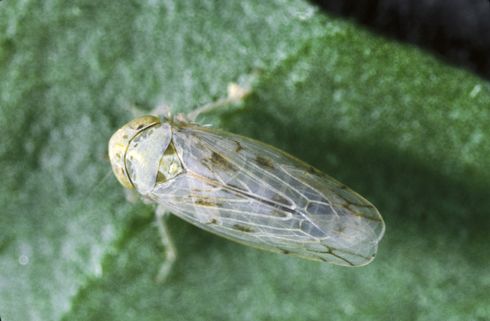
Justin Dutra on Pest Control
Cal Ag Today recently caught up with Justin Dutra, a crop consultant in pest control for the Hanford branch of Crop Production Services (CPS) to discuss some of the crops he looks after, including, “row crops, dairy crops, cotton, nuts and tree crops.

CPS conducts year-round research and training to order to stay up-to-date on crop protection products and provide their members with accurate information on their use, benefits and limitations. While his region has seen relatively low levels of the leaffooted bug, Dutra noted some other bugs that are worrying growers, such as, “leafhoppers on tomatoes and stink bugs.”

Adult leaffooted bug, Leptoglossus zonatus. Note the two yellow spots on the pronotum behind the head, characteristic of this species.
(Photo by David R. Haviland, UC Statewide IPM Program)
The problem with leafhoppers is they puncture the underside of plant leaves and extract much-needed nutrients. Their saliva can cause spotting or yellowing of the leaves and stunting or distortion of the plant. The bigger concern growers have is leafhoppers can also transmit disease. Commenting on the disease that has been most problematic for farmers, Dutra said, “Curly top used to be just a virus you would see every once in a while; now it can wipe out a field.” Dutra noted when they started realizing leafhoppers were becoming a problem two years ago, and again this year, “We are starting to treat for them, and they are beginning to die down now, but they are still there to be reckoned with.”
While the shortage of water has affected growers up and down the state, Dutra noted, “I’m on the East Side and the West Side, and there are more tomatoes coming in on the East Side because of water restrictions on the West Side.”








